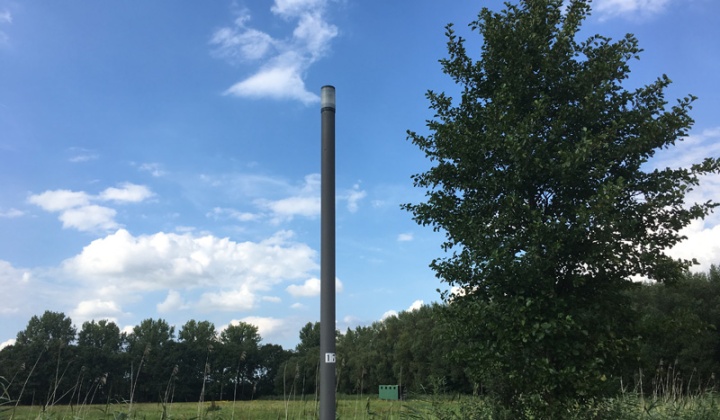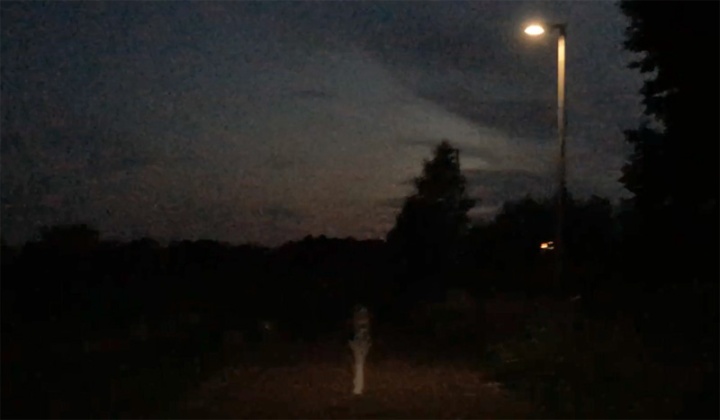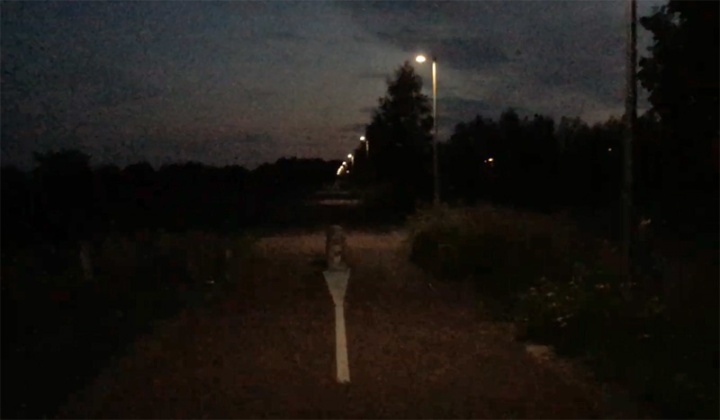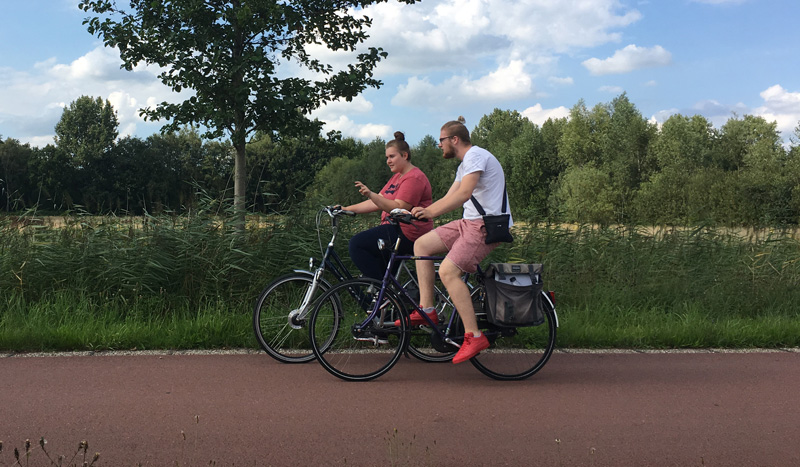When the cycle route from ’s-Hertogenbosch to Vlijmen was upgraded in 2012, the designers faced an interesting challenge: a main cycle route needs lighting at night to make it socially safe. But this is a route that passes through a protected nature reserve. To disturb wildlife as little as possible, dynamic lighting was introduced. The street lights are now only on when people using the cycle route are detected.


In a blog post almost 6 years ago, I explained that the cycle highway from ’s-Hertogenbosch to Vlijmen takes the most direct route between the two places. It was the original road for all traffic that had been used for cycling exclusively since a parallel motorway was built at some distance in the 1970s. It took until 2012 though, before the old road was really changed to cater for cycling only. The biggest challenge in that conversion was how to have lights on a cycleway that runs directly past a Natura2000 protected nature reserve. (A categorisation of nature reserves from the European Union.) Protecting wildlife is one of the main reasons to create a Natura2000 nature reserve in the first place. That is why the management guidelines clearly state, that you should:
Avoid damaging activities that could significantly disturb these species or deteriorate the habitats of the protected species or habitat types.
Lighting the place up with street lights is considered disturbing, but on the other hand you cannot have a main cycle route without lights either, since the social safety would not be at acceptable levels when people would have to cycle in this remote area in total darkness. Especially this time of the year when the days are still so short that both morning and evening rush hour take place in the dark.

The road managers came up with the innovative solution of dynamic lighting, that I wrote about in the aforementioned post, but that I had not been able to show you earlier. Mainly because my previous cameras weren’t good enough to capture streetlights in the dark. As it turns out, my iPhone 6s could do that acceptably well. So I was now finally able to create a short video to show you how it works. When you use the cycle route, sensors pick up your body heat and the next sector you will be traversing lights up, especially for you and just long enough for you to pass that sector. The system calculates the time that the lights have to be on based on the average speed that people cycle in the Netherlands, which is about 16km per hour. If you look behind you, you may even see the lights turn off again. The system consists of LED lighting, so energy consumption is kept as low as technically possible at this time.


Not everybody is always happy about this. At least one person complained that he is not always detected. A recumbent rider, who cycles at double the speed of an average Dutch rider, mentioned on a forum that he was not detected. The same happened to him in fog. That was about the only mention I could find about this particular dynamic lighting system, so I take it that it usually works well enough.
When I went to film there sometime last summer, the detection did indeed work fine and I was surprised how much it influenced my mood. It is remarkable how welcoming it feels when you arrive at a point and see the infinite darkness ahead of you suddenly light up like a runway! It is great when you can look a long way onto the cycle route ahead of you, now lit up just for you and just long enough for you to traverse that sector. Maybe that sensation wears off a little when you come here more often, but I really liked it. This is a brilliant way to protect wildlife from too much light pollution and have a safe and convenient cycle route at the same time.
Video about the dynamic lighting system on this cycle route.



Great idea, here we have few little nature reserves, but the lights of the bikepaths are always on at the dark hours.
Splendid idea which I already had some years ago for the about 20km long route between Nuremberg and Erlangen, where some 5-6 km go alongside forestry or farmland.
@Peter: Mark wrote it in his post, how detection works there:
“So I was now finally able to create a short video to show you how it works. When you use the cycle route, sensors pick up your body heat and the next sector you will be traversing lights up, especially for you and just long enough for you to pass that sector. “
Weird place to put bollards. Are the grey stone looking bollards indicating city/town borders? The last light in the section could have been moved closer to the bollards to improve their visibility.
No, the municipal border is already earlier, but this is the last bit where a farmer needs to get to his land. So that is why the “bollard” is here. I agree the thing is a bit bulky, but there were blocks of old concrete here before, so it is actually better than it was before. I agree the lighting could be better positioned. At least there are good lines to show where the block is.
Detection is difficult to maintain, do tou jnow what sort of system this is? Microwave radar?
“When you use the cycle route, sensors pick up your body heat and the next sector you will be traversing lights up, ”
Most likely a PIR sensor.